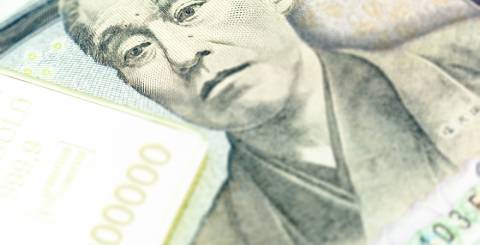The Land of the Rising Golden Sun

2016 was a year that the Japanese population will never easily forget due to their position from an economic perspective that was akin to them being between the devil and the deep blue sea. The Japanese edged away from the ‘Krugman Era’ and moved towards the ‘Bernanke era’ creating a state of turmoil as the rising national debt breached the size of its economy and the rising Yen was not helping as the Japanese government used the power of the Yen obtained via tax on interest payments and increasing taxes to sustain government spend was not an option.
To make matters worse, even increasing interest rates was not a viable measure as it would have devastated the Japanese banking industry due to the fact that most of the financial institutions in Japan have large holdings of the Japanese government bonds which are trading for less than 1 %.
All these factors collectively have had a significant impact on the direction that money flowed within the Japanese economy as each Japanese that had any excess funds turned into gold bullion buyers overnight in order to protect or preserve what little purchasing power that they had left. The entire situation is largely attributed to the large deficit which according to some reports (one of which blared the headlines “The Gold Rush Cometh”) the national debt of one of the world’s most powerful economies was 1 Quadrillion Yen which sparked fears that the Yen would eventually lose most of its value and plunge to a level that would send the country into the abyss of bankrupt nations.
These fears ran the Japanese economy to even more treacherous waters as the populace in fear of confiscation turned towards precious metals markets outside their borders which caused a Yen exodus as the people desperately tried to save their wealth from certain doom. This exodus, however, had an opposite effect on the Yen and stopped the yen from increasing value and instead weakened it by 13 % making it expensive for the Japanese to use Yen outside Japan which subsequently stabilized the Yen and caused the Japanese savers to buy gold at record volumes within Japan.
The sudden demand for domestic gold acted as a catalyst and stimulated the precious metals industry in the country that quickly caught the attention of investors and brought them into the Japanese market which actually boosted foreign direct investments and influx of foreign currencies that raised the bar on revenue for the government through commissions, storage, and duties.
The situation resulted in the government shelving tax increment initiatives that were on the table as the finance ministry considered the repercussions of a tax increase would lead the Japanese economy back to where they began at the onset of this economic kerfuffle.
The situation seems to have been brought under control and currently, the Japanese government is looking for ways to turn things around and balance up their deficit and keep it that way until the debt margins are within solvable levels or wrestled to below the reserves of the Central Bank of Japan.
With the struggles Japan currently faces financially, and with it's central bank being forced to invest heavily in shares of all major Japanese companies and banks, similar to the GFC solution enacted by president Barrack Obama during his first term in office, it is not unwise for the Japanese public to look to a safe haven in gold bullion and silver bullion investments. Countries such as China and Russia have been promoting this method both for their central banks and the general public for almost a decade now, and both countries now hold the largest gold reserves which have been audited and verified within recent years.
Similar Articles
For many UK stock market investors, 2018 was not a year to celebrate. Anyway, put a dozen investment experts in a room and you will usually get 12 different opinions.
The best penny stock traders make it look so easy. You think to yourself, "Hey, look how easy it is for them to make money. Surely I can do it, too." The truth is, though, trading penny stocks requires having the ability to pinpoint patterns, and you must be willing to take on a lot of risks.
In investing, penny stocks are securities that trade for under $5 per share. Some of these, however, truly are penny stocks, trading for mere cents, or fractions of cents. Although cheap stocks like these can make for risky investments
The Volcker rule was devised after the fall of major financial institutions in the US that saw many savers lose their life savings from large reckless corporation that traded the public’s money in high risk markets for short-term gains




